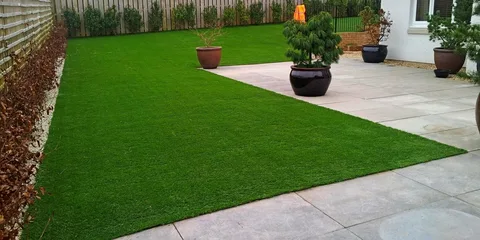Introduction to Grass Turf and Lawn Care
If you’ve ever dreamed of having a lush, green lawn that feels like walking on a soft carpet, you’re not alone. Grass turf is a game-changer when it comes to achieving a healthy and gorgeous yard. But, let’s be honest — lawn care can sometimes feel like rocket science, right? Don’t worry, though. I’m here to break it down for you in a simple, human-friendly way so you can master your turf and lawn with confidence.
What is Grass Turf?
Grass turf refers to pre-grown grass, usually delivered in rolls or slabs, that can be laid directly onto prepared soil to instantly create a green lawn. It saves you the wait of growing grass from seed, providing quick and even coverage.
Benefits of Using Grass Turf
- Instant results — No more staring at bare soil while seeds take their sweet time to sprout.
- Erosion control — Helps prevent soil erosion, especially on slopes.
- Better weed control — Denser turf leaves less room for weeds to sneak in.
- Time-saving — Save months compared to traditional seeding.
Types of Grass Turf
When it comes to grass turf, you generally have two options: natural or artificial.
Natural Grass Turf
This is genuine living grass grown on a farm and harvested in rolls. It gives you that authentic look, cools the environment naturally, and improves air quality.
Artificial Grass Turf
Made from synthetic fibers, artificial grass requires far less maintenance. It’s perfect if you want a green look without worrying about watering, mowing, or fertilizing.
Lawn Care Essentials
Let’s talk about the backbone of a healthy lawn — proper Lawn care! Whether you choose natural turf or artificial, these essentials will help you maintain that green goodness.
Soil Preparation
Healthy grass starts from the ground up. Test your soil’s pH, add compost if needed, and till it so that your grass roots can thrive.
Fertilization Techniques
Think of fertilizer as a vitamin boost for your lawn. Slow-release fertilizers are your best friend because they feed your grass over time without burning it.
Watering Strategies
Overwatering is a classic rookie mistake. Aim to water deeply but less frequently to encourage roots to grow strong and deep. Early mornings are the best time to water.
Mowing Practices
Cutting your lawn too short is like giving it a bad haircut. Stick to the “one-third rule”: never remove more than a third of the blade height at once. And yes, keep those mower blades sharp!
Installing Grass Turf
Ready to get your hands dirty? Here’s how to lay grass turf like a pro.
Site Preparation
- Clear away any existing vegetation
- Level the soil
- Add a starter fertilizer
- Lightly water the soil before installation
Laying Turf Step by Step
- Start laying along a straight edge
- Stagger the joints like bricks
- Press edges firmly together
- Roll the turf to remove air pockets
- Water thoroughly
Maintaining Grass Turf
Even after laying your turf, you can’t just sit back with a cold drink — at least not yet!
Weed Control
Weeds are sneaky little troublemakers. Use a pre-emergent herbicide in early spring to stop them before they sprout.
Pest Management
Look out for grubs and insects. If you spot brown patches, investigate — it might be a pest problem. Natural predators like nematodes can help.
Aeration and Dethatching
Aeration keeps your soil from getting compacted, while dethatching removes dead grass that blocks water and nutrients. Both should be part of your yearly routine.
Seasonal Lawn Care Tips
Every season demands something different from you — like a moody roommate.
Spring Lawn Care
- Fertilize
- Overseed any thin spots
- Apply pre-emergent weed killer
Summer Lawn Care
- Water deeply
- Raise mowing height to reduce stress
- Watch for pests
Fall Lawn Care
- Aerate
- Fertilize to help roots grow strong for winter
- Rake leaves to prevent smothering
Winter Lawn Care
- Keep foot traffic minimal
- Remove debris
- Sharpen your tools for spring
Common Lawn Problems and Solutions
Even the best-kept lawns can run into trouble.
Patchy Grass
Bare spots? Could be from dogs, heavy foot traffic, or disease. Reseed these areas in early spring or fall.
Fungal Issues
Mushrooms and mold love moisture. Improve drainage and avoid overwatering to keep them away.
Eco-Friendly Lawn Care Practices
Sustainability matters, even for your lawn.
Organic Fertilizers
Organic fertilizers feed your grass slowly, without harsh chemicals that harm the environment.
Water Conservation Tips
Use smart irrigation systems or collect rainwater in barrels. Every drop counts!
Conclusion
Having a lush, healthy lawn isn’t some impossible dream. With the right knowledge and a bit of effort, you can make your yard the envy of the neighborhood. Whether you pick natural grass turf or its artificial cousin, a good lawn care routine will keep things looking fresh, green, and healthy. Now, go on and show off that amazing lawn — you’ve earned it!


